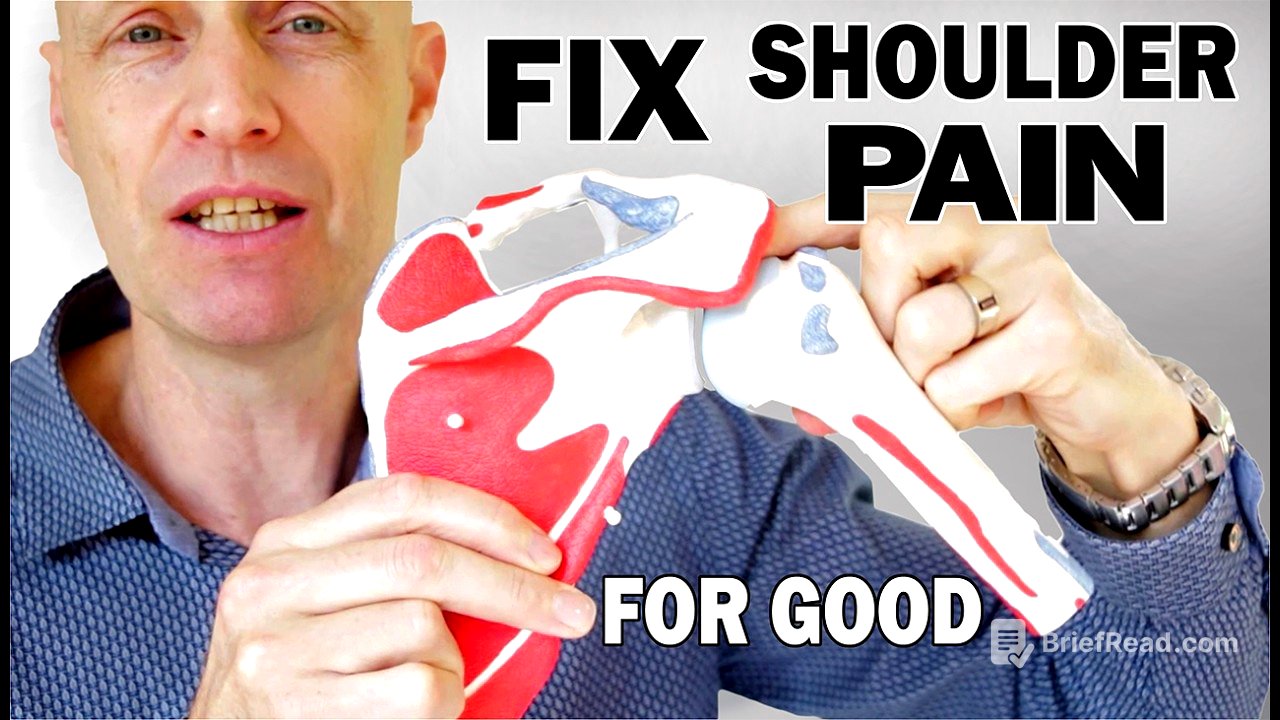TLDR;
This video explains how to fix shoulder issues by addressing the underlying cause: the movement and position of the shoulder blade. It emphasizes the importance of the lower trapezius and serratus anterior muscles in stabilizing and rotating the scapula. The video provides two exercises to activate and strengthen these muscles, which can alleviate shoulder impingement and strain.
- Focus on scapular movement to fix shoulder issues.
- Two key muscles: lower trapezius and serratus anterior.
- Two exercises provided to activate and strengthen these muscles.
Introduction [0:01]
The video addresses the frustration of ineffective rotator cuff exercises and introduces a method to fix shoulder issues by targeting the root cause. The key to shoulder rehabilitation involves light, repetitive movements through the full range of motion to stimulate muscle spindles, improve blood flow, and promote collagen deposition. The common issue with rotator cuff exercises is that they often fail to address the underlying problem related to the movement and position of the shoulder blade.
Understanding Shoulder Movement [0:44]
Every shoulder movement involves two components: the glenohumeral joint (shoulder socket) and the shoulder blade. Insufficient upward rotation of the shoulder blade leads to excessive movement in the glenohumeral joint, causing impingement and strain on the rotator cuff muscles. This can result in tendinitis. Proper shoulder blade movement relies on the synergistic action of the lower trapezius and serratus anterior muscles, which tend to become weak.
Importance of Lower Trapezius and Serratus Anterior [1:25]
The lower trapezius and serratus anterior muscles are crucial for maintaining the scapula in a retracted, posteriorly tilted position, which opens up space in the glenohumeral joint when the arm is down. These muscles are also essential for upwardly rotating the shoulder blade, creating space when lifting the arm. Activating and strengthening these muscles can be achieved through two specific exercises.
Exercise 1: Lower Trapezius Activation [2:09]
Start by lying on your back with legs bent, abdominals slightly drawn in, and chin tucked. Raise your arms with thumbs facing up. Practice engaging the lower trapezius by moving your arms two-thirds of the way towards the floor, pushing your hands away to raise your shoulders, and then pulling the shoulder blades back down. For the exercise, maintain the starting position and slowly lower your arms towards the floor without bending your elbows, using your lower trapezius to keep your shoulders down throughout the movement. Repeat this 10 times slowly, tensing your abdominals and keeping your chin tucked. This exercise primarily targets the lower trapezius while also engaging the serratus anterior.
Exercise 2: Serratus Anterior Activation [4:15]
Begin on all fours with arms externally rotated, chin tucked, and spine neutral. Lock your elbows and lower your body towards the floor, allowing the shoulder blades to come together. Then, push your torso away from the floor, protracting the shoulder blades as far as possible. Maintain the pushing sensation with the serratus anterior and move back until your pelvis touches your heels, engaging your lower trapezius to keep your shoulders down. Return to the starting position while actively pushing with the serratus anterior and keeping your shoulders down with the lower trapezius. Repeat these motions 10 times slowly to synergistically engage both muscles.
Integrating Exercises into Routine [6:48]
Perform one set of 10 repetitions of each exercise daily, especially before gym workouts or overhead sports. While the exercises may seem tricky initially, they only take a few minutes to complete. These exercises are key for improving shoulder health, inhibiting tight upper trapezius muscles, and relieving pressure on strained AC joints.









